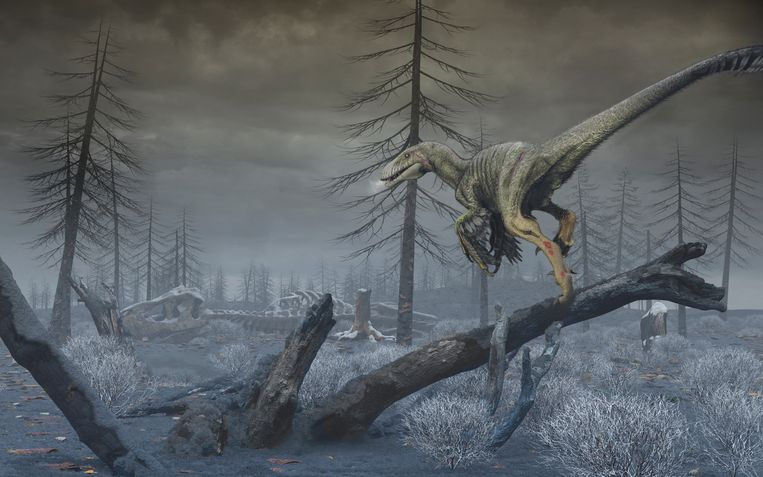A giant meteor hit the Earth and wiped out the dinosaurs from the map in one fell swoop. Or was it more complicated? New Belgian research shows that fine particles also played an important role. “This could also help us in the current climate crisis,” says Pim Kaskes, one of the VUB’s co-researchers.
I investigated the cause of the extinction of dinosaurs. Didn’t we already know that?
Casques: “It is generally accepted that a meteorite impact in Mexico 66 million years ago played a very important role. But many people believe that the impact itself was the cause. It is true that in the immediate vicinity there was a huge explosion, followed by earthquakes, a tsunami and a hot gas cloud. But Only flightless dinosaurs that fell within a radius of 2,000 to 3,000 kilometers became extinct. However, we see that after this, dinosaurs did not return in all parts of the Earth. In addition, we find a thin layer of rock containing impact debris all over the world .
What exactly did you research?
“We looked at the very small, soft material that ended up in the atmosphere as a result of the impact and spread across the Earth very quickly afterward. For this purpose we went to the United States, to a site in North Dakota where the layer is very thick. This is very interesting.” , because it really allows us to better understand the story of the first minutes, days and years after the impact. Back in the lab, we ran grain size analyzes on the samples. We put the data we extracted from this into a global climate model in collaboration with our colleagues at the Royal Observatory. This way we can build a model “From those samples, it gives an idea about the first years after the collision.”
And the?
“It turns out that particles played a very important role in the end of the dinosaurs. In fact, the light on Earth went out for two years because of a huge dust cloud. This ensures that sunlight cannot penetrate our planet. It took at least two years before plants had enough light to photosynthesise again, and at least fifteen years before all the dust disappeared from the atmosphere. These particles also reduced the global temperature by fifteen degrees. Before that, we already knew that the meteor caused the winter impact, but we didn’t know exactly what processes were behind it and how long it lasted.
What are the consequences of this for life on Earth?
“The dust cloud set off a chain reaction that eventually led to the extinction of three-quarters of plant and animal species. Dinosaurs are very large and needed specific food sources to survive. If some plants died due to lack of sunlight, the dinosaurs that ate those plants would also have a hard time.” This in turn eliminates the food source for carnivorous dinosaurs On the other hand, mammals survived because they were small enough to hide in holes, could hibernate and live on rotten plants, among other things. We believe that some plants also produced seeds that could survive in the soil and germinate when sunlight returned.
Has the final mystery about the end of dinosaurs been revealed?
“No, definitely not. This is a great step, but we hope in the future we will get a better idea of what other materials were thrown into the atmosphere as a result of the impact, such as sulfur and soot. Our research could also help us with the current biodiversity and climate crisis. The meteorite impact occurs on A very rapid scale compared to normally slow geological processes. This can be compared to current climate change. By better understanding these past events, we can learn about how ecosystems responded to extreme changes in climate and environment.

“Thinker. Coffeeaholic. Award-winning gamer. Web trailblazer. Pop culture scholar. Beer guru. Food specialist.”







More Stories
Comet Tsuchinshan-Atlas is ready to shine this fall
Sonos isn’t bringing back its old app after all
Indiana Jones and the Great Circle is coming to PS5 in spring 2025